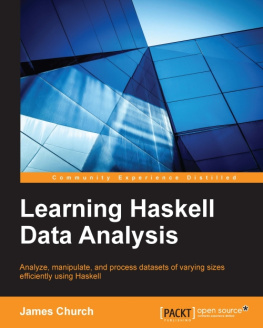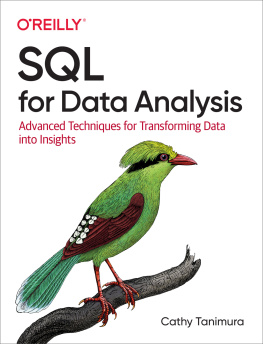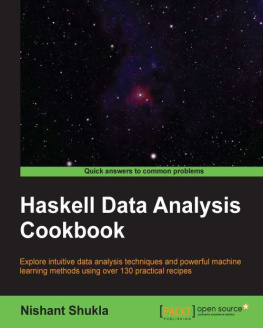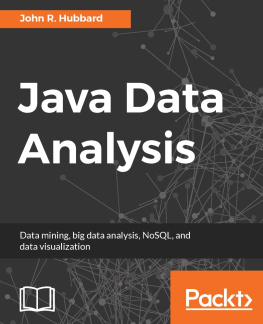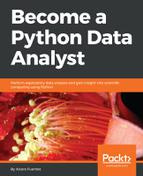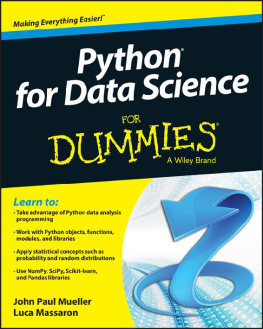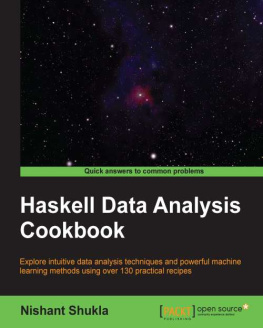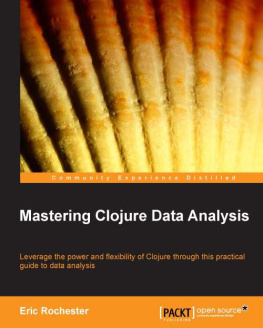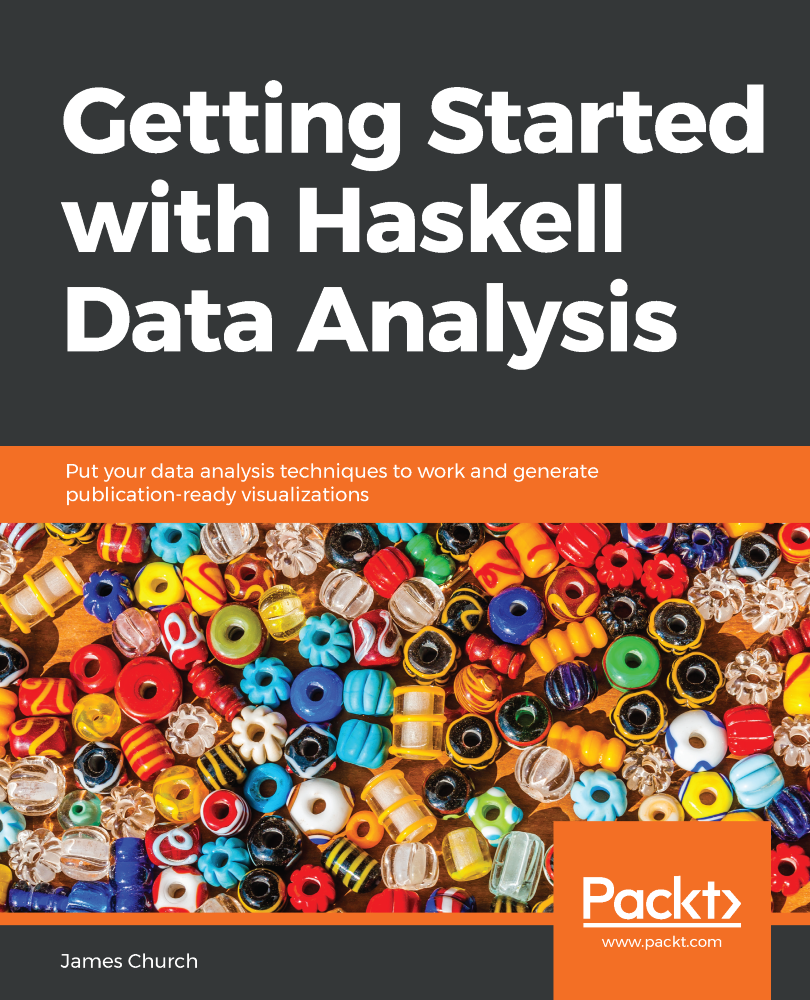
Getting Started with Haskell Data Analysis
Put your data analysis techniques to work and generate publication-ready visualizations
James Church

BIRMINGHAM - MUMBAI
Getting Started with Haskell Data Analysis
Copyright 2018 Packt Publishing
All rights reserved. No part of this book may be reproduced, stored in a retrieval system, or transmitted in any form or by any means, without the prior written permission of the publisher, except in the case of brief quotations embedded in critical articles or reviews.
Every effort has been made in the preparation of this book to ensure the accuracy of the information presented. However, the information contained in this book is sold without warranty, either express or implied. Neither the author, nor Packt Publishing or its dealers and distributors, will be held liable for any damages caused or alleged to have been caused directly or indirectly by this book.
Packt Publishing has endeavored to provide trademark information about all of the companies and products mentioned in this book by the appropriate use of capitals. However, Packt Publishing cannot guarantee the accuracy of this information.
Commissioning Editor: Amey Varangaonkar
Acquisition Editor: Trusha Shriyan
Content Development Editor: Arun Nadar
Technical Editor: Diksha Wakode
Copy Editor: Safis Editing
Proofreader: Safis Editing
Indexer: Priyanka Dhadke
Graphics: Alishon Mendonsa
Production Coordinator: Deepika Naik
First published: October 2018
Production reference: 1301018
Published by Packt Publishing Ltd.
Livery Place
35 Livery Street
Birmingham
B3 2PB, UK.
ISBN 978-1-78980-286-3
www.packtpub.com
mapt.io
Mapt is an online digital library that gives you full access to over 5,000 books and videos, as well as industry leading tools to help you plan your personal development and advance your career. For more information, please visit our website.
Why subscribe?
Spend less time learning and more time coding with practical eBooks and Videos from over 4,000 industry professionals
Improve your learning with Skill Plans built especially for you
Get a free eBook or video every month
Mapt is fully searchable
Copy and paste, print, and bookmark content
Packt.com
Did you know that Packt offers eBook versions of every book published, with PDF and ePub files available? You can upgrade to the eBook version at www.packt.com and as a print book customer, you are entitled to a discount on the eBook copy. Get in touch with us at customercare@packtpub.com for more details.
At www.packt.com , you can also read a collection of free technical articles, sign up for a range of free newsletters, and receive exclusive discounts and offers on Packt books and eBooks.
Contributors
About the author
James Church lives in Clarksville, Tennessee, United States, where he enjoys teaching, programming, and playing board games with his wife, Michelle. He is an assistant professor of computer science at Austin Peay State University. He has consulted for various companies and a chemical laboratory for the purpose of performing data analysis work. James is the author of Learning Haskell Data Analysis.
Packt is searching for authors like you
If you're interested in becoming an author for Packt, please visit authors.packtpub.com and apply today. We have worked with thousands of developers and tech professionals, just like you, to help them share their insight with the global tech community. You can make a general application, apply for a specific hot topic that we are recruiting an author for, or submit your own idea.
Preface
Data analysis is part computer science and part statistics. An important part of data analysis is validating your assumptions with real-world data to see whether there is a pattern, or a particular user behavior that you can validate.
In this book, we are going to learn about data analysis from the perspective of the Haskell programming language. The goal of this book is to take you from being a beginner in math and statistics, to the point that you feel comfortable working with large-scale datasets. While mathematics is a big part of data analysis, we've tried to keep this book simple and approachable so that you can apply what you learn to the real world.
Who this book is for
This book is intended for people who wish to expand their knowledge of statistics and data analysis via real-world examples. A basic understanding of the Haskell language is expected. If you are feeling brave, you can jump right into a functional programming style.
What this book covers
, Descriptive Statistics , teaches you about the Text.CSV library. It also covers some of the descriptive statistics functions, such as mean, median, and mode.
, SQLite3 , focuses on how to get the data from CSV into SQLite3. You will understand the data types of SQLite3 and how to fetch data using SQL statements. It also covers how to create your own custom module of descriptive statistics.
, Regular Expressions , introduces you to regular expression syntax, such as dots and pipe. It also covers character classes at length. Finally, it teaches you how to use regular expressions within a CSV file and an SQLite3 database.
, Visualizations , starts with the installation of gnuplot and the EasyPlot Haskell library. It covers how to use moving average function to analyze stock data. Finally, it teaches you how to make publication-ready plots by adding legends and saving those plots to files.
, Kernel Density Estimation , introduces you to central limit theorem and normal distribution and helps you to understand the difference between them. Later, it talks about the kernel density estimator and how to apply it to a dataset.
, Course review , works on the MovieLens data by applying what you have learned from the first five chapters. In addition to what was covered in the earlier chapters, you will also be exploring a few more interesting techniques for analyzing the data.
To get the most out of this book
You will need to set up the IHaskell notebook environment to test the examples in these chapters. You will also need some knowledge of the Haskell programming language, math, and statistics.
Download the example code files
You can download the example code files for this book from your account at www.packt.com. If you purchased this book elsewhere, you can visit www.packt.com/support and register to have the files emailed directly to you.
You can download the code files by following these steps:
- Log in or register at www.packt.com.
- Select the SUPPORT tab.
- Click on Code Downloads & Errata .
Next page


